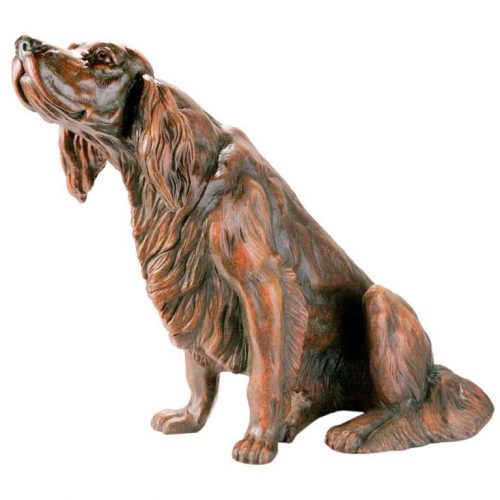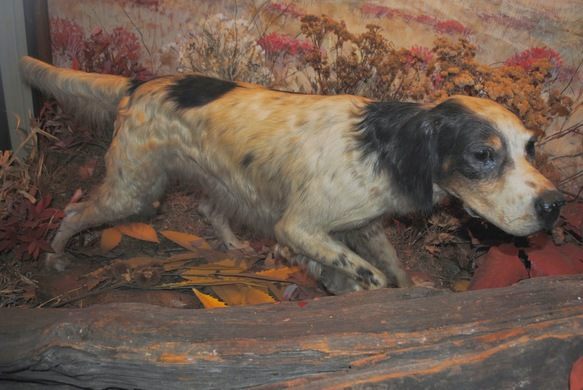
Few dogs have warranted as much attention in their day as did Count Noble. In fact, the English Setter’s death in 1891 warranted an obituary in The New York Times. He is regarded by most to be the foundation of the Llewellin strain of the breed (a name coined by Americans). Though he did well enough in the show ring and field trials – rumor has it that the dog was seldom entered at benched dog shows because other Setter owners complained about competing with his fame. Not for nothing was he popularly known as the “$10,000 hunting dog.” That said, it wasn’t the show ring or field that put Noble on the proverbial map, it was his prepotency as a stud dog.

After his death, “Count” was stuffed, mounted, and put on display at the Carnegie Museum of Natural History of Pittsburgh where he stayed poised for the hunt for nearly a century. Eventually, he was sold to the National Bird Dog Museum at Grand Junction where he remains still, pointing at a covey of bobwhite quail.
To underscore his importance to students of field dogs, we share an anecdote passed along by one Mr. Kormuth who prepared the five-generation pedigree of Count Noble, and who competed in regional field trials with his own dog, an Irish setter, named Ruby Wons Over. On a 1999 visit to the Carnegie Museum before Noble’s display was shipped to Tennessee, Kormuth overheard a 10-year-old girl look through the display glass and say, “Ooooh, there’s a dog in there.” To himself, Kormuth thought: “Girl, that’s not a dog, that’s Count Noble.”
A portrait of Noble painted by Edmund Henry Osthaus hangs in the first floor reading room of the private businessman club, the Duquesne Club, in Pittsburgh. The club also has possession of Noble’s collar. As AKC judge, Richard LeBeau,” described him, Noble was the “Man O’War of English setters.”
The name, “Llewellin, was never recognized by the AKC, and most clubs simply register these dogs as English setters, but when some wealthy people of influence petitioned, Llewellin setters were recognized as a separate breed in 1904 by the Field Dog Stud Book maintained by an American publisher in Chicago. English Setters continue to be fabulous dual-purpose dogs – and we love them!
Image: English Setter sculpture, a life-size Victorian terracotta piece that’s yours for $6,500 here.
